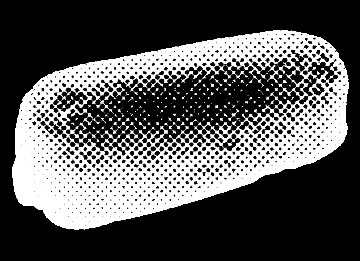
“Well, let’s say this Twinkie represents the normal amount of psychokinetic energy in the New York area. According to this morning’s sample it would be a Twinkie…thirty-five feet long weighing approximately six-hundred pounds.”—Egon Spengler, Ghostbusters (1984)

The dimensions of Egon’s hypothetical Twinkie seem inconsistent. A 600-pound Twinkie should only be about 6.4 feet long, while a 35-foot long Twinkie should weigh about 50 tons. [That’s a big Twinkie!] In general, an x-foot long Twinkie should weigh about 2.34 x3 pounds.
Nor are such mammoth Twinkies mere mathematical fantasy. In 1980, to celebrate the snack icon’s 50th birthday, the Continental Baking Corporation made a 10-foot, 1.3-ton Twinkie. Its dimensions corroborate the above formula, which says a 10-foot Twinkie should weigh about 1.2 tons.
Still skeptical? Here are the measurements used. Length of an ordinary Twinkie: 9.9 cm. Mass of an ordinary Twinkie: 36.4 g. The formula above assumes the shape and density of a Twinkie are independent of its size, an assumption which may be hard to swallow.
Actually, Egon’s Twinkie was a simplification of a more elaborate analogy meant to explain how cosmic inflation makes us vulnerable to paranormal incursions:
“We were delighted with the notion that this script could be so ‘out there,’ and yet still have a scientific and parapsychological plausibility. From a physics point of view, Dan [Aykroyd] was always talking about things like ‘holes in the reality envelope.’ Well, I didn’t know what that would mean to an audience, so I came up with this ‘Mr. Wizard’ kind of analogy—describing the universe as an expanding, four-dimensional balloon. And as I was talking, I’d be blowing up this balloon. Then I’d explain, ‘If something were to penetrate the envelope of our reality…’—and the balloon would pop. That then led to the ‘Twinkie’ analogy. The whole thing made sense in terms of the plot but it was just much too long, so only the Twinkie survived.”—Harold Ramis, from the marginalia of the screenplay as published in Making Ghostbusters (p. 104, 1985)
This makes the above formula seem a little small-minded. [Relativistic effects escaped my imagination entirely!]